Top speed 270 km/h Length 11 m Engine type Klimov TV3-117 First flight December 1974 | Range 900 km Wingspan 16 m | |
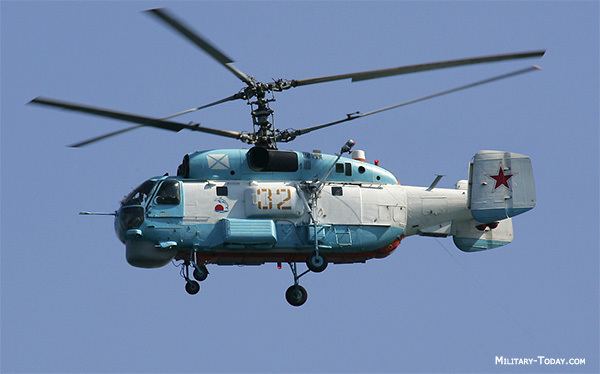 | ||
Kamov ka 27
The Kamov Ka-27 (NATO reporting name 'Helix') is a military helicopter developed for the Soviet Navy, and currently in service in various countries including Russia, Ukraine, Vietnam, People's Republic of China, Republic of Korea (South Korea), and India. Variants include the Ka-29 assault transport, the Ka-28 downgraded export version, and the Ka-32 for civilian use.
Contents
- Kamov ka 27
- Design and development
- Operational history
- Variants
- Military and government operators
- Civilian operators
- Former operators
- Specifications Ka 27
- References
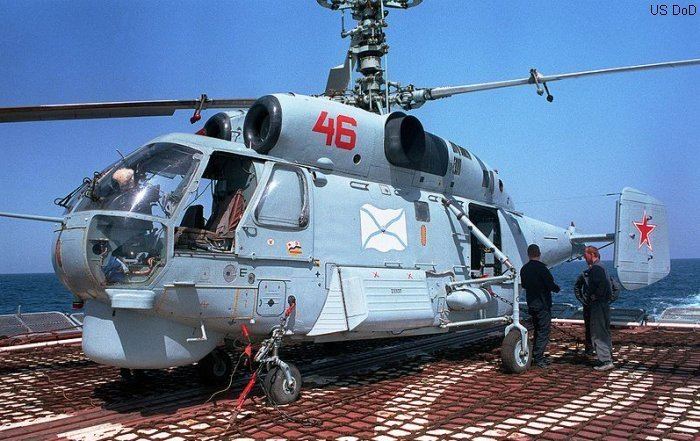
Design and development
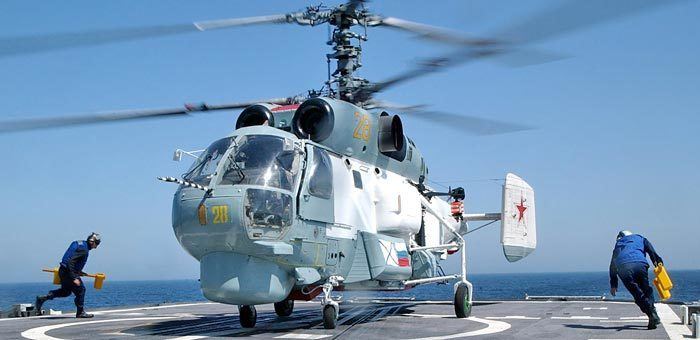
The helicopter was developed for ferrying and anti-submarine warfare. Design work began in 1969 and the first prototype flew in 1973. It was intended to replace the decade-old Kamov Ka-25, and is similar in appearance to its predecessor due to the requirements of fitting in the same hangar space. Like other Kamov military helicopters it has coaxial rotors, removing the need for a tail rotor. Ka-32 variants, e.g. the Klimov-powered Ka-32A11BC, have been certified for commercial operations throughout the world, notably in Canada and Europe.
Operational history
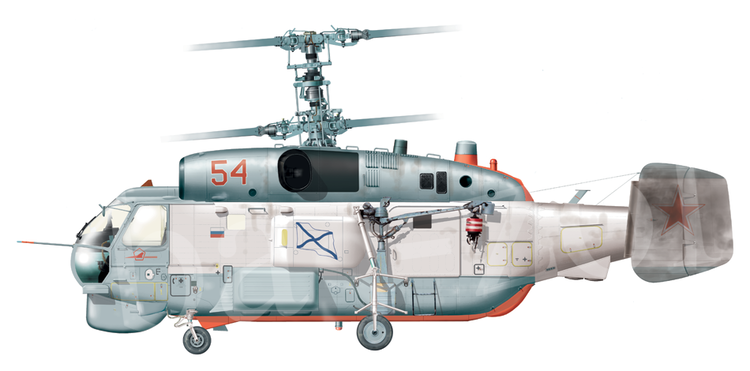
A Russian Navy Ka-27 helicopter from the Russian Udaloy-class destroyer RS Severomorsk (DDG 619) conducted interoperability deck landing training on board USS Mount Whitney on 22 July 2010.
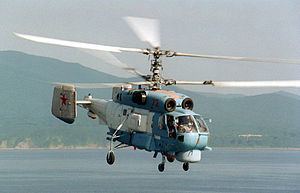
Ka-32A11BC multipurpose helicopters have been successfully operated in Portugal for over five years. In 2006, KAMOV JSC won the tender for the supply of Ka-32A11BC firefighting helicopters, to replace Aérospatiale SA-330 Pumas, which have very high operating costs.
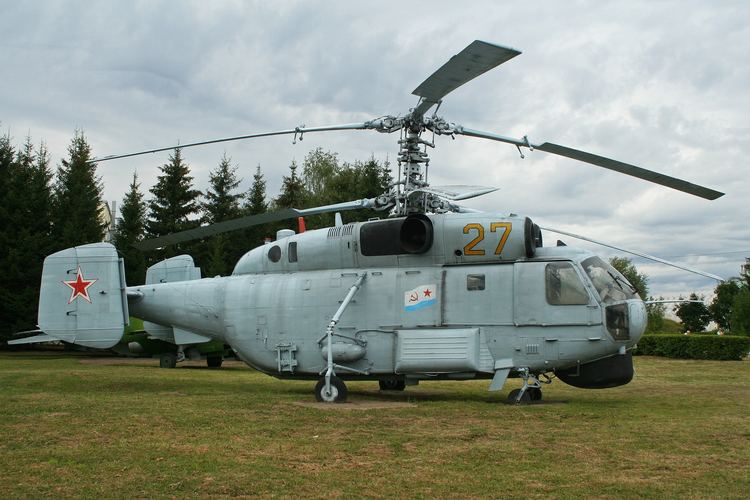
The Ka-32A11BC features a high power-to-weight ratio and ease of handling, owing to its coaxial rotor design. The rotors' diameters are not restricted by the presence of a tail rotor and associated tail boom; this facilitates maneuvering near obstacles and helps assure exceptional accuracy when hovering in heavy smoke and dust conditions. The Ka-32A11BC may be equipped with the Bambi Bucket suspended fire-fighting system of up to five tons capacity. The service life has been extended to up to 32 000 flight hours.
Since the 1990s, China has purchased the Ka-28 export version and Ka-31 radar warning version for the PLAN fleet. Ka-31 purchases were first revealed in 2010. It is believed that Chinese Ka-28s have been equipped with more enhanced avionics compared to Ka-28s exported to other countries.
In 2013, Russia tested the new Kamov Ka-27M with an active electronically scanned array radar. The basis of the modernization of the Ka-27M is installed on the helicopter airborne radar with an active phased array antenna FH-A. This radar is part of the command and tactical radar system that combines several other systems: acoustic, magnetometric, signals intelligence and radar. All the information on them is displayed on the display instrumentation.
Ka-32s are used for construction of transmission towers for overhead power lines, as it has somewhat higher lift capacity than the Vertol 107. In Canada, the Ka-32 is used for selective logging as it is able to lift selective species vertically.
In August 2013, a Kamov Ka-32, C-GKHL operating in Bella Coola, Canada, experienced failure of one of its Klimov TV3-117BMA engines (manufactured by Motor Sich in Ukraine). The subsequent technical investigation indicated that there was poor quality control in the assembly of the compressor turbine, leading to failure of the complete unit after several compressor blades separated.
Syrian Navy Ka-27's were used to bomb rebel positions in Damascus during the ongoing Syrian Civil War.
Variants
Military and government operators
Civilian operators
Former operators
Specifications (Ka-27)
Data from
General characteristics
Performance
Armament
Ka-27
Ka-29TB
Avionics
